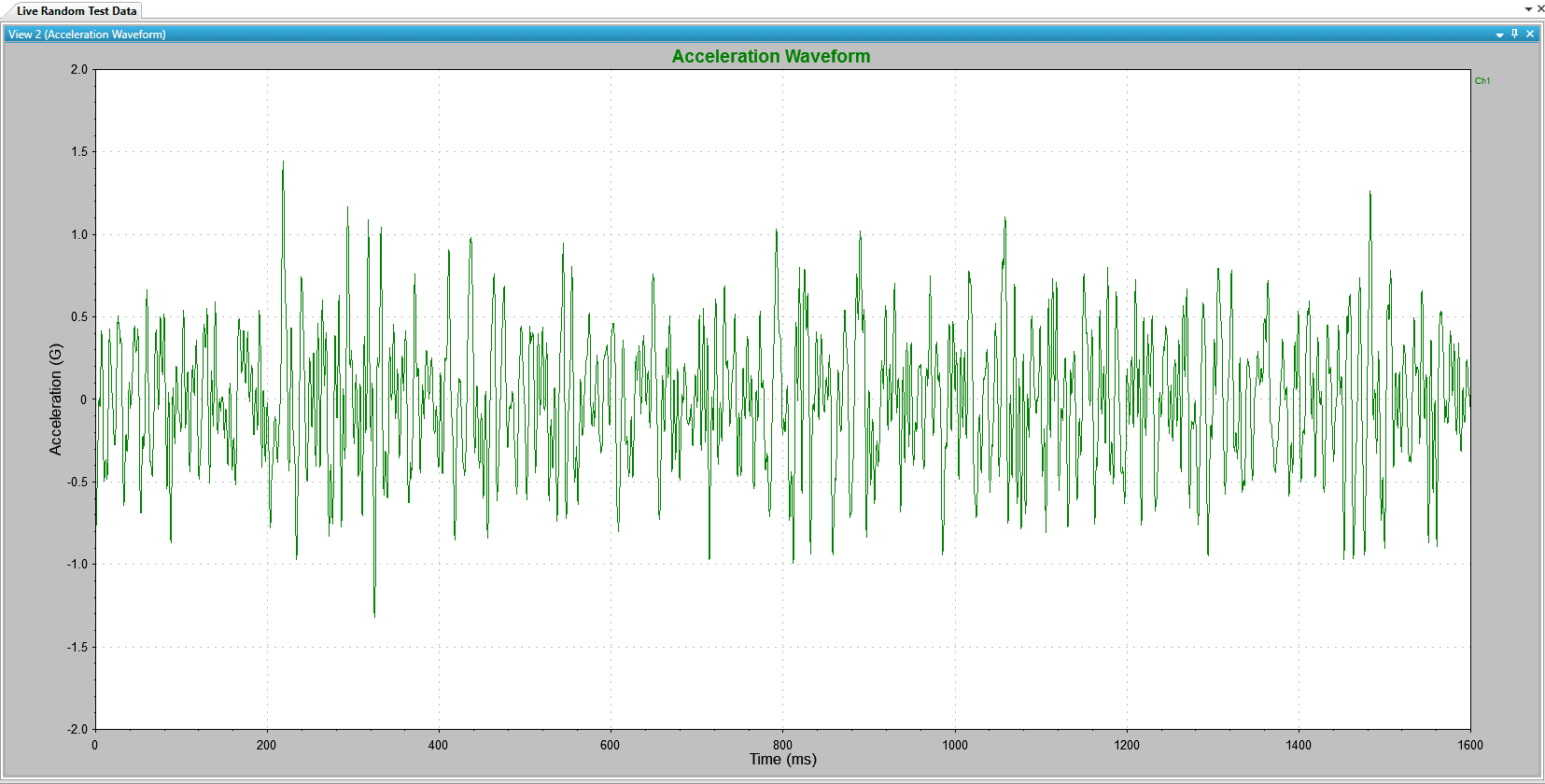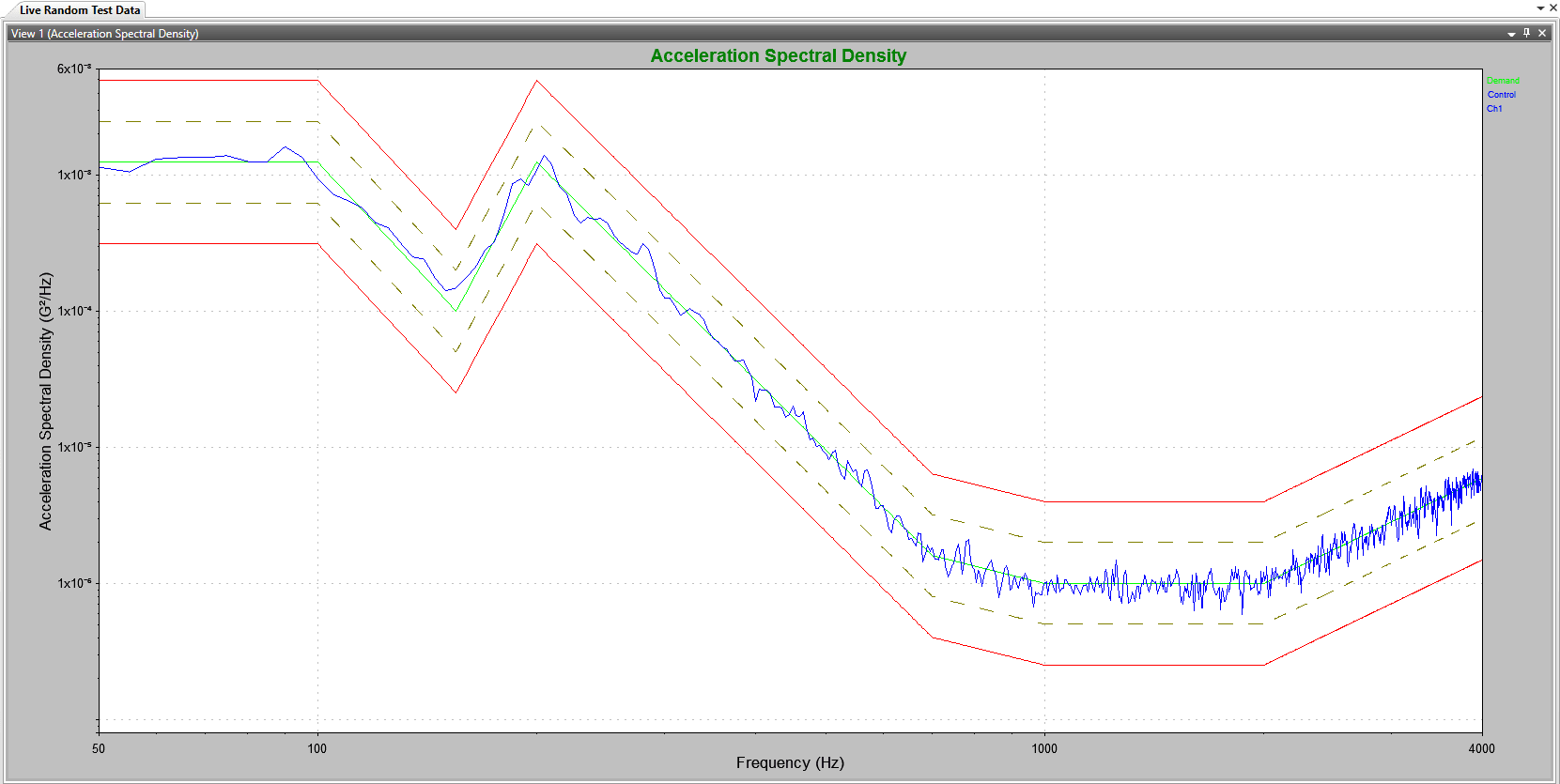When preparing to run a vibration test, a test engineer is faced with the question of what kind of test they should run. One option is a random vibration test.
What is a Random Vibration Test?
A random vibration test is a test that simultaneously sends random vibrations that over time include the entire vibration test’s frequency range. For example, consider Figure 1, in which a test profile is displayed that tests an item from 50Hz to 4000Hz.

Figure 2. The acceleration waveform for a Random vibration test. Note the random amplitudes of the accelerations experienced by the DUT.
In Figure 2, the acceleration waveform for that test is displayed. The display shows a ragged plot where random amplitude vibrations are used to test the device under test (DUT).
Why Should I Use Random Testing?
Random vibration testing is beneficial for several reasons:
-
- The real world is less synthetic than a single sine wave. Exciting all the frequencies makes a random test a more realistic representation of what occurs in the real world.
- A random test can represent the multiple field environments that the DUT may experience.
- A random test can be accelerated to create a test representative of a longer field life than is practical in a lab.
- A DUT may have multiple resonances. Sine testing can only test one resonance at a time and cannot test the interactions of multiple resonances. By exciting all resonances at the same time, random vibration gets a glimpse of the interaction between resonances.
When Should I Use Random Testing?
Vibration test engineers should use random vibration testing when:
-
- Looking to test a product for real-life, non-deterministic vibration
- Looking to see how a product will respond to multiple resonances being excited at the same time
Bringing the product to failure using a sine track and dwell at one frequency ignores how vibrations at other frequencies affect the failure rate. Random vibration testing results in a faster failure mode because all frequencies in the test profile are excited simultaneously.
As the innovator in vibration control, Vibration Research wants to help your company run more efficient and effective vibration tests. Fill out the form below to download VR’s Random test guide.

